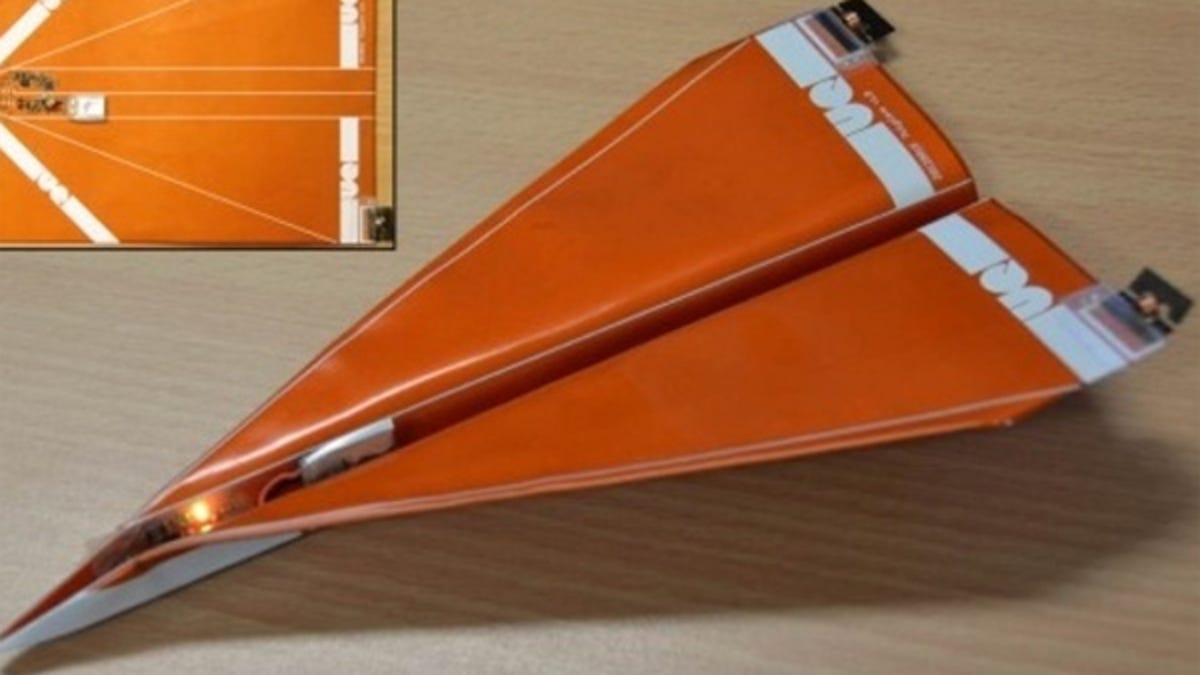Aussies design paper plane drone for detecting bushfires
Researchers at the University of Queensland have created a disposable, biodegradable drone based on a paper plane.

(Credit: University of Queensland)
Researchers at the University of Queensland have created a disposable, biodegradable drone based on a paper plane.
Drones are slowly shedding their bad image as primarily war machines, with many benign versions coming out — with uses including play, educationand environmental research. Two new designs could also help with an annual Australian problem: bushfires.
The robotics team at the University of Queensland, led by Dr Paul Pounds, has developed low-cost, disposable and biodegradable drones that can be used for environmental monitoring, sending back reports on conditions that could indicate an imminent bushfire.
The first, called the Polyplane, is based on a paper plane. Made of a single sheet of cellulose rather than paper, its body is treated with UV light and microwave sintering to turn it into a circuit board, and electronics printed directly onto the surface. Electrical components can then be glued directly onto it, and the sheet folded into a plane shape — so cheap and easy to make that it can be discarded after just a single use. Launched from a larger drone, it uses two elevons on its wings to steer itself.
A second design, called the Samara, is based on a maple seed, with a single wing that allows it to flutter gently to the ground without damaging the electronics. A small circuit board forms the seed's "head", with an antenna providing weight. Where the Polyplane monitors atmospheric conditions, the Samara can give feedback on conditions closer to the ground.
And, since both are biodegradable, their disposal will have minimal environmental impact, especially if they fall where they can't be retrieved.
At this point, the designs are still in the prototype stage, with no plans announced to produce them on a mass scale. However, it's certainly great to see the potential of UAVs expanded even further into saving lives, rather than taking them.
Via www.gizmag.com

